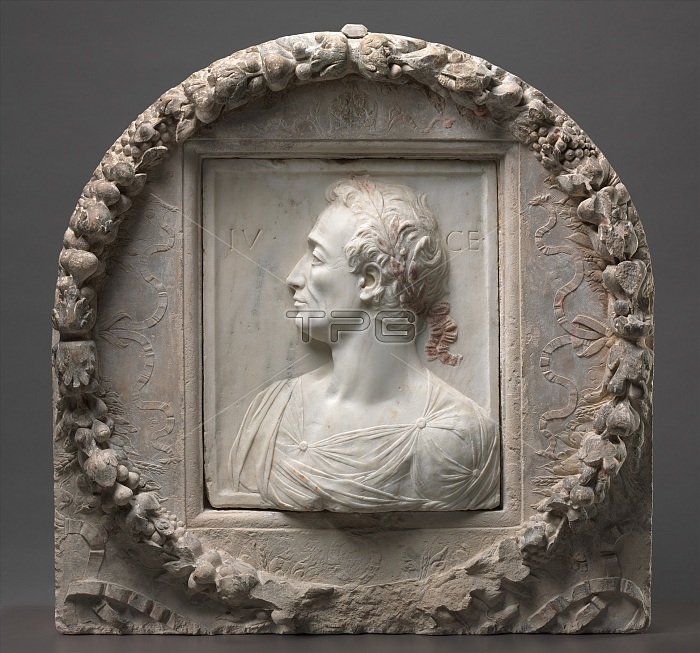
Julius Caesar, c. 1455-60. Roman emperor Julius Caesar (100-44 BC) appears here as a political rather than military leader, worn by the burdens of office, with carefully described signs of aging. Mino probably used ancient coins from the collection of the Medici, Florence's ruling family, as his starting point for this sculpture. However, the complex carving, the clinging drapery, and the psychological intensity all characterize the inventiveness Renaissance artists brought to classical subject matter. In this case, Caesar offered an important model for leadership, masculinity, and composure. The garland is clearly by a different hand, but passages, such as the ribbons and flowers in low relief, correspond to details found in other decorative carvings from Mino's workshop. Initially, the limestone setting was probably put into a wall, perhaps in a lunette over the door, from which it was later removed. However, the relationship between the garland and the relief has not yet been clarified and is the subject of ongoing research.
| px | px | dpi | = | cm | x | cm | = | MB |
Details
Creative#:
TOP25291112
Source:
達志影像
Authorization Type:
RM
Release Information:
須由TPG 完整授權
Model Release:
No
Property Release:
No
Right to Privacy:
No
Same folder images:

 Loading
Loading